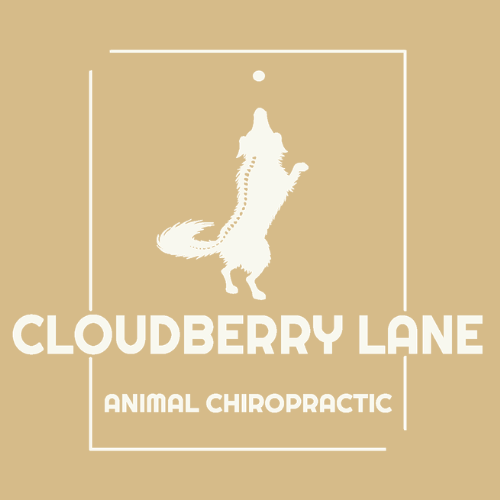There are many concerns related to your dog getting older but what are the proper steps to take in order to help your pup have the best quality of life as a senior? One of the most important lifestyle changes is their exercise routine. We should not only be considering how much exercise they need but also the quality and how often they should be exercised. This is vital for maintaining their posture which is directly related to spinal health and mobility. The two most common abnormal postures that develop in old age are sway-backed and roaching. Both are preventable with proper care and have a huge impact on quality of life in the golden years of your pet.
Sway-backed and roaching are opposite postures. Roaching is excessive flexion of the back in which the hips drop down and the tail becomes tucked. Sway-backed, on the other hand, is an excessive extension where the belly dips downwards. In both cases the animal has lost the muscle activity required to keep their spine in a neutral posture. When working with four-legged animals it is important to remember that gravity affects them differently compared to humans. The spine of a four-legged animal is, in essence, a suspension bridge between the shoulder blades and the hips. The abdominal muscles are vital in maintaining the integrity of your dog’s core to keep the spine in a neutral position. When the natural alignment of the spine is lost, the spinal cord is tensioned. This tension interferes with the nervous system’s ability to communicate and therefore hinders the body’s natural ability to heal.
So how do we strengthen your dog’s core? There are four simple alterations in your daily routine that can be made to slowly increase abdominal strength.
Alternate which side you walk your dog on - If your pup has only ever walked to the left of you, then switch it up. This will create new but gentle stressors on your dog’s body as well as their brain. Changing the side your dog is walked on allows for greater communication between the brain and the body through the growth of new pathways in the brain. However it should be noted that this walking strategy is not favored by some training techniques. While initially being trained to walk well on a single side may expedite the training process it does nothing for the long term health of your pet.
Vary the terrain - Do not always walk your dog on a flat surface as this is a surefire way to lose core strength. Make sure your dog gets walked on a variety of uneven surfaces and up and down hills. This type of activity requires them to brace their abdominals and employ more dexterity than simply walking on smooth cement.
Opt for playing fetch - This doesn’t appeal to all dogs but for the ones that love to chase a ball it can be an amazing core exercise. Playing fetch often requires a dog to make sharp turns and quick decisions. The toy being chased is unpredictable in its movements and therefore stimulates parts of the brain not used everyday. Requiring the brain to respond to unforeseen changes in body positioning is a tactic used in the athletic training of humans. In the long run this decreases the chance of future injury.
If possible take your pup for a swim - The benefits of swimming are extensive but sufficeive to say it takes pressure off old joints while still requiring a braced core. For dogs with hip or elbow dysplasia this may be their best, and sometimes only, option. It is a gentle form of exercise that allows your dog to mobilize their joints with less pain and little to no risk of injury.
While it is important for your dog to get exercise at all ages it is also vital to avoid a couch-to-marathon or weekend warrior approach. Remember that your exercise tolerance is not their exercise tolerance. While you are at work or running errands, your dog is at home most likely sleeping. Very few modern dogs get the amount of exercise their ancestors evolved to withstand and just because they are capable of running for hours on a weekend hike does not mean their body is prepared for that amount of exertion. Just like with humans, jumping into an exercise routine without proper conditioning can lead to injury. Whether that be a strained muscle or a fracture it can hinder the dog for the rest of their life. Exercising your dog should take place multiple times a day, every day, to prevent injury and improve their quality of life as old age approaches. Smaller amounts of exercise taken more often mimics a more natural form of conditioning and is more gentle on an old dog’s body. All of these exercise tactics will keep your dog mobile and comfortable well into old age.

